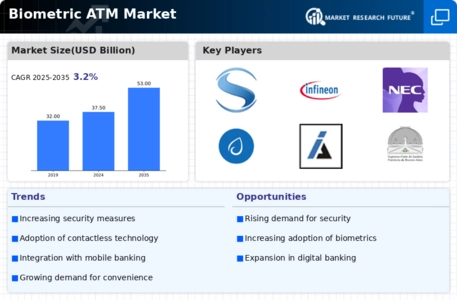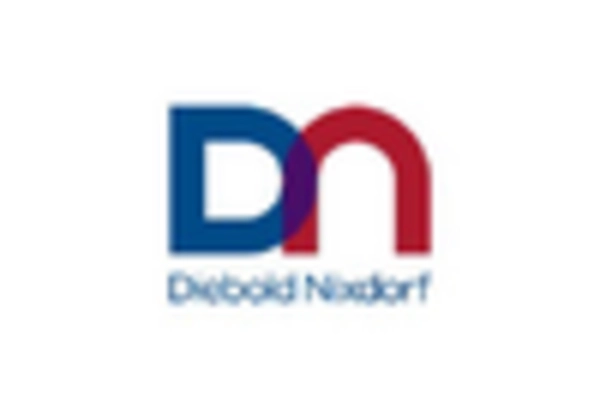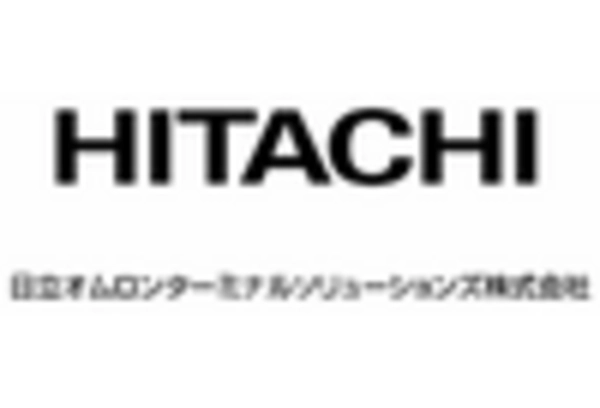Increasing Adoption of Biometric Technology
The rising adoption of biometric technology is a primary driver for the Biometric ATM Market. Financial institutions are increasingly integrating biometric systems to enhance security and streamline customer experiences. According to recent data, the biometric technology market is projected to grow at a compound annual growth rate of over 20% in the coming years. This trend indicates a strong inclination towards adopting biometric solutions, which are perceived as more secure than traditional methods. As banks and ATMs incorporate fingerprint, facial recognition, and iris scanning technologies, the Biometric ATM Market is likely to witness substantial growth. The convenience and security offered by these systems appeal to consumers, thereby driving demand for biometric ATMs.
Growing Concerns Over Fraud and Identity Theft
Concerns regarding fraud and identity theft are propelling the Biometric ATM Market forward. With increasing incidents of financial fraud, consumers and financial institutions are seeking more secure transaction methods. Biometric ATMs provide a robust solution by ensuring that only authorized users can access their accounts. Data suggests that identity theft cases have surged, prompting banks to invest in advanced security measures. The implementation of biometric authentication not only mitigates risks but also enhances customer trust in financial services. As a result, the demand for biometric ATMs is expected to rise, as they offer a reliable means of safeguarding sensitive information and preventing unauthorized access.
Technological Advancements in Biometric Systems
Technological advancements in biometric systems are significantly influencing the Biometric ATM Market. Innovations in sensor technology, machine learning, and artificial intelligence are enhancing the accuracy and efficiency of biometric authentication methods. For instance, the development of 3D facial recognition and advanced fingerprint scanning technologies is making biometric ATMs more reliable and user-friendly. These advancements are likely to attract more financial institutions to adopt biometric solutions, thereby expanding the market. Furthermore, as technology continues to evolve, the cost of implementing biometric systems is expected to decrease, making them more accessible to a wider range of banks and ATMs. This trend indicates a promising future for the Biometric ATM Market.
Regulatory Framework Supporting Biometric Solutions
A supportive regulatory framework is emerging as a crucial driver for the Biometric ATM Market. Governments and regulatory bodies are increasingly recognizing the importance of biometric solutions in enhancing security and preventing fraud. Policies that promote the use of biometric technology in financial transactions are being established, encouraging banks to adopt these systems. For example, regulations that mandate stronger customer authentication methods are likely to push financial institutions towards implementing biometric ATMs. This regulatory support not only fosters innovation but also instills confidence among consumers regarding the safety of biometric transactions. As a result, the Biometric ATM Market is expected to benefit from these favorable regulatory conditions.
Consumer Preference for Convenient Banking Solutions
Consumer preference for convenient banking solutions is driving the Biometric ATM Market. As customers seek faster and more efficient ways to conduct transactions, biometric ATMs offer a compelling solution. The ability to authenticate identity quickly through biometric methods reduces wait times and enhances the overall banking experience. Data indicates that a significant percentage of consumers are willing to adopt biometric authentication if it simplifies their banking interactions. This shift in consumer behavior is prompting financial institutions to invest in biometric technologies to meet evolving customer expectations. Consequently, the demand for biometric ATMs is likely to increase, as they align with the growing trend of convenience in banking services.


















Leave a Comment